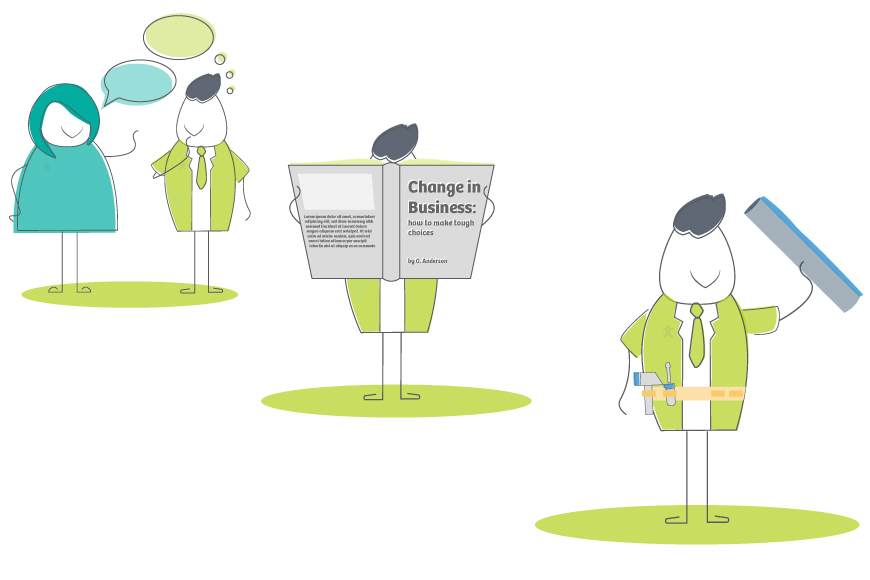How to Boost Customer Value
12 Mar 2019
Let’s start with the obvious question: what is customer value?
Although the name is slightly misleading, “customer value” DOES NOT mean the value that your customers bring to your business.
Customer value is the benefit people get from being your customer.
This is all tied up in the actual product or service they receive, how much they’re paying you, their perception of that exchange, how they feel about how these good or services were purchased, the treatment they got from your staff…and on and on and on.
Basically any thread that ties your customer to your business will influence this nebulous idea of “customer value.”
Most people break it down into two areas: perceived and desired.
Desired Customer Value
When prospective customers find your products, they will have an idea of what is going to happen next. This includes:
- What happens when they first get in touch
- How the purchase process goes
- The way they receive their newly purchased goods or services
- And how these goods or services perform when they get them home
- Depending on your business model, it will also include any after care
People have an idea of how they want each stage of the customer journey to go. Now, these may not all be reasonable ideas…they could expect to pay tuppence for the moon and be treated like royalty the whole time, but that is still their “desired” customer value.
The key takeaway from this part is that there’s very little you can do to influence this. No matter how upfront you are about how your process works, what your products cost, and how delivery is organised, people will always have their own ideas.
It doesn’t mean there isn’t something to learn here, but I’ll come back to that in a bit.

Looking for a quick overview?
Sometimes all you are looking for is a quick video to give you a feel for the software you're investigating. Well search no further. Just click the button, sit back, relax, and watch our quick overview video.
watch nowPerceived Customer Value
Once a person starts down their journey with your business, they will have a perception or opinion of how each step is going.
Not all of your customers or prospective customers will agree, each one will have their own perceived customer value.
They will each have an opinion on:
- Their experience with your sales team
- The quality of the product or service
- The cost of said product or service
- And how they were treated when they rang up with a question
Your customers’ perception will be built on the difference between their desired customer value and their real life experience of dealing with you and your team.
This difference is something you can affect, which leads me nicely to my next point:
How can you “boost” or improve customer value?
Now we get to the meat of the question of customer value. And the first thing to understand here is that there is no “actual”, “real” customer value.
As I mentioned above, each and every person who comes to your business will have their own idea about how their customer journey should go. This means that you have as many “customer values” as you have customers.
Your business may have it’s own processes and procedures, but the difference between those standard processes and each person’s desired outcome will therefore be unique to each person.
Boosting your customer value will therefore entail knowing three things:
- What do your customers WANT?
- What is your business delivering?
- What can you do about the difference between those two things?
Sound easy?
No, not to me either.
Finding out the desired customer value
This is, in some ways, the easy part of the process.
But (and you’re going to have to trust me on this) you can’t just ask a person what they want from your business.
First off, they will struggle to tell you exactly what it is they DO want. Oh they’ll tell you they want to pay less and get more. But when it comes to other parts of the process it can be hard to articulate things like “your website isn’t easy to use” into actionable changes.
People are much more likely to give you clear answers when you ask them what went wrong.
So that’s the first step here.
Ask your customers which parts of the process they DIDN’T like and this will give you a window into what they actually want.
What is your business delivering?
This may seem obvious, you know what your business is SUPPOSED to be delivering, but the key here is to see this from your customer’s perspective.
Let’s say that you think the check out process on your website is really clear and easy to use. But your customers have complained, saying they get lost in it.
So you sit down with someone totally new to your website and watch them work their way through it. Or you use Google Analytics to find out where most people are dropping out of the process.
Now you can see it from a customer’s perspective.
Whether you agree or disagree with your customer’s perspective isn’t the issue here. The important thing is that you know where things are falling down.
Time to make a plan
Once you know what’s going wrong, you’ll be able to see the difference between the two and make a plan for addressing it.
Now the solution will rarely be overhauling your business processes. It’s much more likely that you’ll make small changes, tweak processes, and gradually improve your customer value.
In the example above, you might not be able to change your check out process for whatever reason, but maybe you’ll add a few bits of guidance text to the individual pages to help make people’s journey through it a little easier.
Getting feedback from your customers and finding ways to action that feedback is the best way to boost customer value.

What do you get with OpenCRM?
Unrivalled customer support? 2TB of storage per account? Data held in EU? It's the sort of stuff we think you should be able to take for granted, but which you won't necessarily get from our competitors.
find out moreAnd now for a personal example of this process
We recently updated our interface and asked a few of our customers to pilot it for us. Although a few came back with suggestions of what they would like to see, most only came up to us when something didn’t behave the way they expected.
In one case that I recall, one of our customers told us that the Reports on the Dashboard were more difficult to see in this new interface. This was her way of telling us that our Dashboard wasn’t meeting her expectations.
We spoke to her about whether it was the text, the colours, the background, etc. This gave us a window into what our business was delivering, through her eyes.
By working with our customer, we eventually found that the problem was that when she scrolled down through a number of these Reports, they all bled together, making it difficult for her to derive any value from the information she was seeing.
This gave us the difference between her expectation and what we were delivering.
We were able to use that to make a few small adjustments to the design of our Dashboard, making it easier to differentiate between the Reports on it. Easy in the end, but without having that dialogue with our customer, we would never have known that it needed to be done.
Before I got my start in the tech industry as part of Apple’s UK Mac launch team, I was a professional drummer (notice I didn’t say musician). But once I got in, I was hooked and I’ve been involved in the tech industry, primarily software development, for over 35 years. I founded this company and I now have the enviable title of System Architect (as well as Managing Director) here at OpenCRM.